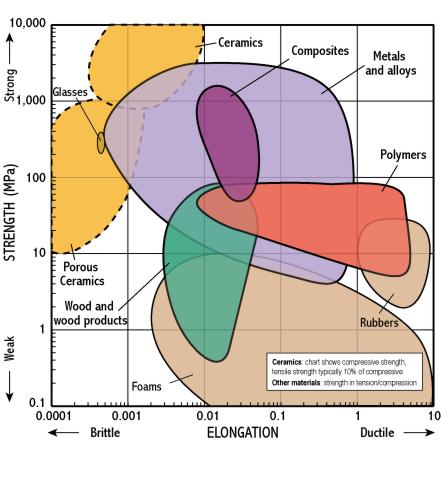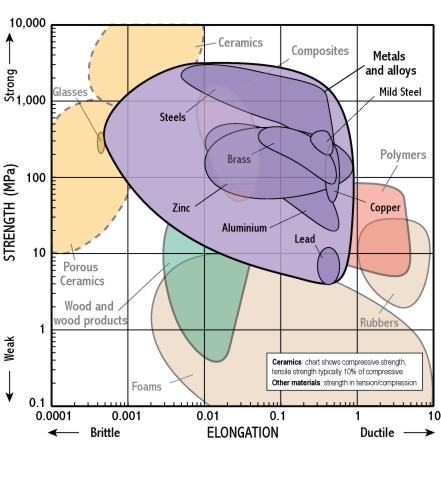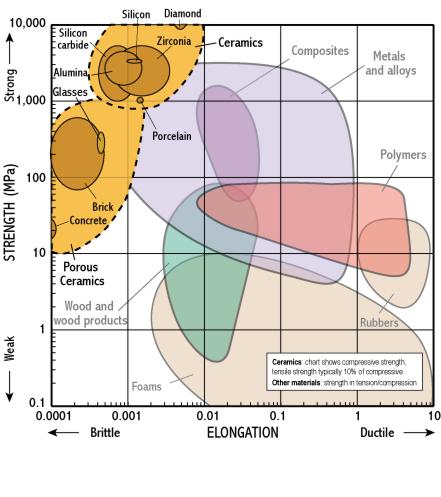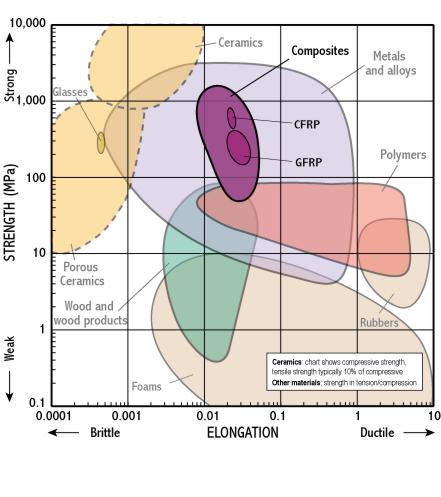Strength - Elongation
Class level

Metals and alloys


Ceramics

Polymers

Wood and wood products

Composites

General Information
- Strength measures the resistance of a material to failure, given by the applied stress (or load per unit area)
- The chart shows yield strength in tension for all materials, except for ceramics for which compressive strength is shown (their tensile strength being much lower)
- Elongation measures the percentage change in length before fracture
- Elongation to failure is a measure of ductility
Physical Insights
- Ceramics have very low elongations (<1%) because they can not plastically deform
- Metals have moderate elongation to failure (1-50%) with deformation occurring by plastic flow
- Thermoplastics have large elongations (>100%) because the molecules can stretch out and slide over one another
- Rubbers have long elastic elongations because the chains can coil/uncoil elastically
- Thermosets have low elongations (<5%) because the molecules are bonded together into a network so that they cannot slide over one another
- One way to strengthen a metal is to make plastic flow difficult Ė this reduces the ductility and elongation
Example Uses
- Few components are designed to elongate significantly - examples are impact protection like crash barriers.
- The chart helps identify materials which can be easily deformed into new shapes during manufacturing
- Designers like to use metals with significant elongations to failure because they are more forgiving of harsh treatment, e.g. car chassis, nails
Simple Questions
- What is the difference between elastic and plastic deformation?
- Why is lead used on old roofs and roof flashings?
- Select materials for a car bumper.
- Select materials for a bungee rope.
- Select materials for drawing pins.
Further Questions
- Why canít rubbers be formed into shapes easily, even though they can be subjected to large deformations?
There are 2 separate populations for this class to improve clarity. Move the mouse over different parts of the class name to reveal each one.
Select chart:






